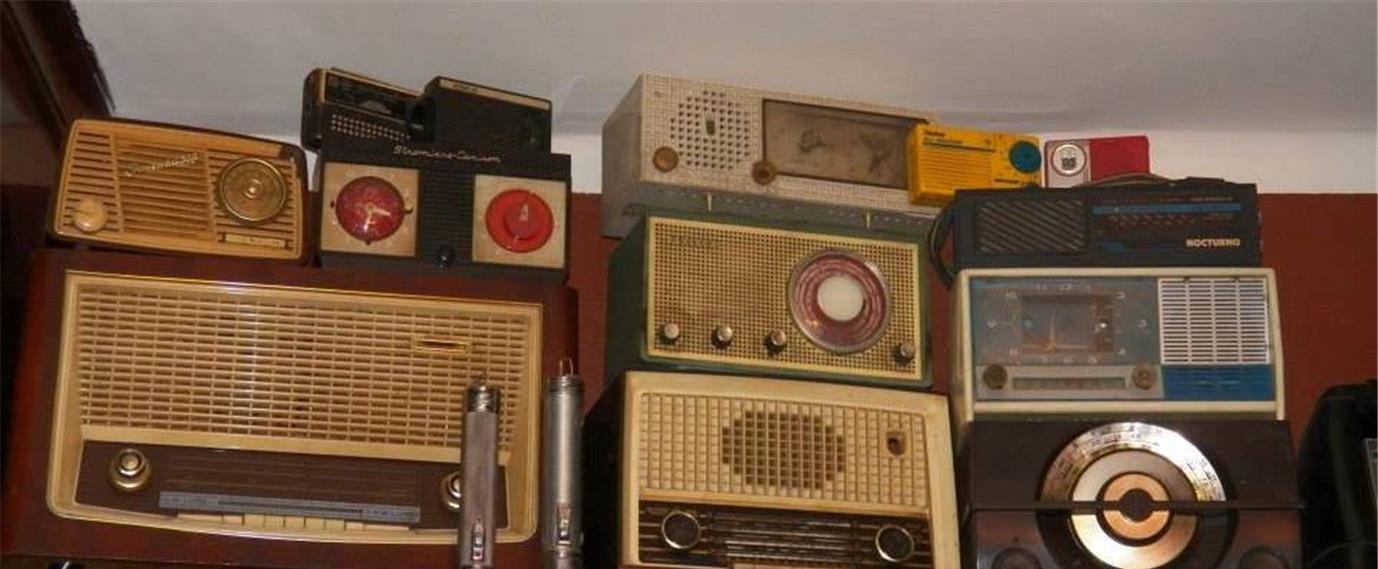رغم ما يتردد من أن الراديو يمر بأصعب أوقاته، مع ظهور عصر الصورة والإنترنت والفضائيات والبث الرقمي، فإن عوامل كثيرة تدل على أن البث الإذاعي سيظل موجودا لأسباب مختلفة، أهمها أنه قادر على جعل العلاقة بين مقدم البرنامج ومستمعيه "علاقة شخصية" على نحو ما. فقد أثبتت دراسة من جامعة ساوثرن كاليفورنيا (1) أجراها باحثان هما باولا وودلاي، ولاورن موفيوس، وجود ما أطلق عليه أكاديميا مصطلح "Para-social Interaction, PSI" أو "التفاعل الاجتماعي الشبهي"، ويقصد به مجموع المعارف التي يمتلكها شخص تجاه آخر أو آخرين، في حين يجهل الطرف الثاني أي معلومات عن الطرف المقابل.
هذه العلاقة التي تتميز بالمعرفة الشديدة من طرف والجهل التام من طرف آخر هي ما يضمن استمرار البث الإذاعي بالدرجة الأولى، إذ يعرف المستمعون الكثير عن مقدم البرنامج، لكن المقدم لا يملك نفس المعلومات عن مستمعيه.
وقد استعمل مصطلح "التفاعل الاجتماعي الشبهي لأول مرة عام 1956 (2) من قبل عالميْ اجتماعٍ أميركيين هما دونالد هورتن وريتشارد ووهل اللذان أقرا بوجود علاقة معرفية أو حسية أحادية بين المشاهير وجماهيرهم، حيث يشكّل الجمهور (المستمعون) "حميمية وهمية" مع مقدم البرنامج، وهي علاقات مبنية على الوهم أكثر مما هي مبنية على علاقة تقاطع حقيقية. وكعادة العلاقات المبنية على تصور شخصي أو وهمي، فإنها تتميز بعمقها و"مصداقيتها المفرطة" من قبل متبنيها، وبالتالي فهي علاقة أمتن مما قد يخيل لنا، حيث يصبح المتلقي في حالة "تواصل حسي" وتصديق تام بأن المقدم يوجه الكلام له شخصيا.
لا يمكن أن توجد هذه العلاقة في أي من الوسائط الأخرى، ذلك أن عامل الصورة في التلفزيون يرفع الغشاوة عن "الوهم التخيلي" ويجعل المقدم متاحا للجميع (وفق مشاعية الصورة) بحيث ينقل عينيه بين المشاهدين ويتحرك بينهم بنفس القدر، لكن الراديو (صوت من دون صورة) يشكِّل مجالا أخصب للتخيل بسبب الشحنة العاطفية الموجودة في الصوت، فالصورة عامة، لكن الصوت خاص. كما أن هذا العامل المهم لا يتوفر في برامج الموسيقى وآيتونزوسبوتيفاي حيث يقتصر صوت المقدم على دور "الفويس أوفر" أو التغطية الصوتية أو التعليق. وربما لهذا السبب، توجد الآن دراسات كثيرة تتناول كيفية بناء "الحميمية الوهمية" بين مقدم البرامج ومستمعيه والتي تتوقف بالدرجة الأولى على شخصية المقدم وقدرته على التواصل والتفاعل، والتي من بين ركائزها الأساسية إظهار الشخصية الحقيقية لمقدم البرامج والتخلي عن الأداء.
وهْمُ انقراض الراديو
من بين العوامل الأخرى التي من شأنها أن تضمن استمرارية الراديو وتنفي وَهم انقراضه، عامل الانتماء بمستوياته، الذي أصبح يعني القرب أو التماس المباشر مع المستمع وتناول الموضوعات التي تمس محيطه المباشر، كما في حالة الانتماء المكاني أو الجهوية التي هي "نحن" أو مجموع المعارف التي نتشاركها قبل الذهاب إلى العمل، كالحرارة وحالة الطرقات وحوادث السير.. إلخ. وهي معارف تربط بين المستمعين وتجعل منهم "وحدة" أو "فئة مستهدفة" تتقاسم نفس الاهتمامات والمصالح، وبالتالي فإن المستمع يعرف مستمعا آخر وفق ما هو مشترك بينهما. ويختفي هذا العامل في برامج الموسيقى مثلا، فأنت لا تعرف من يستمع معك إلى عبد الوهاب، لا تعرف سنَّه وإن كان يقيم معك في نفس الشارع أو في مدينة أخرى تبعد مئات الكيلومترات، وهو ما ينفي عامل "الانتماء".
البث الجهوي واحد من الحلول المقترحة لمشاكل الراديو، فهو يحافظ على الراديو في صيغته التقليدية، لكنه يحوّر المحتوى ويضيق زاوية التلقي، ليصبح منصة مشتركة لمجموعة من الأشخاص يتقاسمون نفس الاهتمامات والمشاغل.
الجهوية هنا بمعنى الانتماء المكاني، وينطبق هذا على الانتماء الفكري أو العمري أو الجندر أو غيرها من "الكوميونيتيز" أو المجتمعات التي يتم الربط بينها عبر المحتوى، ويبقى حس الانتماء من أقوى العوامل في بناء الروتين الذي يتكئ عليه العمل الإذاعي وإيجاد منصة مستمعين أوفياء، فإذا اختفى هذا العامل تخلى المستمع عن "عادة" الاستماع للبرامج الإذاعية.
لكل إذاعة صوت
يقودنا هذا إلى العامل الآخر المهم في استمرارية البث الإذاعي وهو قدرة الإذاعة على خلق صوتها الخاص، وهو تقريبا ما لا يتوفر في باقي وسائل الإعلام التقليدية ووسائل التواصل الحديثة التي تتميز بصوتها الجماعي "collective voice"، في حين يستطيع الراديو أن يقدم مجموعة من الأصوات الخاصة الواحد تلو الآخر، وهو مجموع الأصوات التي تشكل "صوت" المحطة الإذاعية الفريد. فما تقدمه محطة في القاهرة من أخبار ليس هو ما تقدمه محطة في تونس أو في أي عاصمة أخرى من العالم، لكن القنوات التلفزيونية والفضائيات ووسائل التواصل الاجتماعي تخاطب "الكل" بنفس الصيغة وتقدم نفس المعلومات.
وفي الوقت الذي يتردد فيه هذا السؤال بقوة، عن مستقبل الراديو من قبل الباحثين والمختصين، هناك تشكيك من البعض في جدوى طرح هذا السؤال أو في طريقة صياغته، فتراجع مستخدمي البث الإذاعي في صيغته التقليدية (وهو ما لم تثبته الأرقام حتى الآن، ففي أميركا وحدها بيَّن تقرير صدر مؤخرا عن مؤسسة نيلسون الأميركية أن أكثر من 90% من البالغين لا يزالون يستمعون للراديو مرة واحدة على الأقل في الأسبوع) (3).. هذا التراجع -إن وجد- رافقته زيادة في استخدامات البث في السيارات وزيادة المحطات المجتمعية والبرامج التخصصية، فضلا عن البث على الإنترنت والبث الرقمي، وأخيرا البث عبر وسائل التواصل الاجتماعي وغيرها من الاستخدامات المستحدثة. غير أن المؤكد أن الصوت بوصفه "أداة تواصل" سيظل موجودا وقادرا على التميز والمنافسة مقارنة بباقي وسائل الإعلام الأخرى.
قبل أكثر من خمس سنوات، بدأ صناع الراديو في العالم يتكلمون عن ضرورة إيجاد الراديو المرئي لحماية البث الإذاعي من الاندثار، بعدما أعلنت برامج كثيرة وتسابقت بالفعل شركات التطوير التقني في توفير نظام ملائم لذلك، واستُحدثت أنظمة هجينة (Hybrid) تمكِّن من الإرسال الرقمي للبرامج الإذاعية بالتزامن مع البث الإذاعي إلى موقع إلكتروني أو صفحة المحطة على وسائل التواصل الاجتماعي. ومع ذلك وبعد مرور هذه الفترة، لا تزال الصورة تقتصر على كاميرا معلقة في الأستوديو لنقل صورة مقدم البرنامج وهو يتحدث مع ضيفه أو يتكلم في الميكروفون، وهي صورة لم تضف كثيرا إلى البرامج الإذاعية حتى اللحظة، ورغم أن هناك محاولات لتطوير الصورة المنقولة عن البرامج الإذاعية لأبعد من ذلك، فإن الجميع يتفق على أن الراديو هو ذلك الصوت الذي بإمكانك أن تتابعه وأنت منشغل بغسل سيارتك أو كيّ الملابس أو الاسترخاء وعيناك مغمضتان، وبالتالي فالسؤال الذي يظل قائما ومشروعا على الدوام هو: هل حقا تحتاج البرامج الإذاعية إلى صورة؟
الهوامش
(1)?:http://ftp.media.radcity.net/ZMST//InsideRadio/USC_Katz_Study062912.pdf
(2)?:http://visual-memory.co.uk/daniel/Documents/short/horton_and_wohl_1956…
(3)?:http://www.nielsen.com/us/en/insights/news/2015/apples-to-apples-radio-…







































